Masterpiece Story: L.O.V.E. by Maurizio Cattelan
In the heart of Milan, steps away from the iconic Duomo, Piazza Affari hosts a provocative sculpture by Maurizio Cattelan. Titled...
Lisa Scalone 8 July 2024
19 May 2024 min Read
The style of Alma Thomas has been compared to Byzantine mosaics and the Pointillism of Georges Seurat. However, it firmly belongs to the Washington Color School because of its predominant abstract patterns filled with intense coloration. Thomas famously painted her brushstrokes in long bands, almost like crop rows, that create geometric and optical effects of color. The white background of negative space plays against the color foreground of positive space. White versus color. Negative versus positive. There are opposites at play.
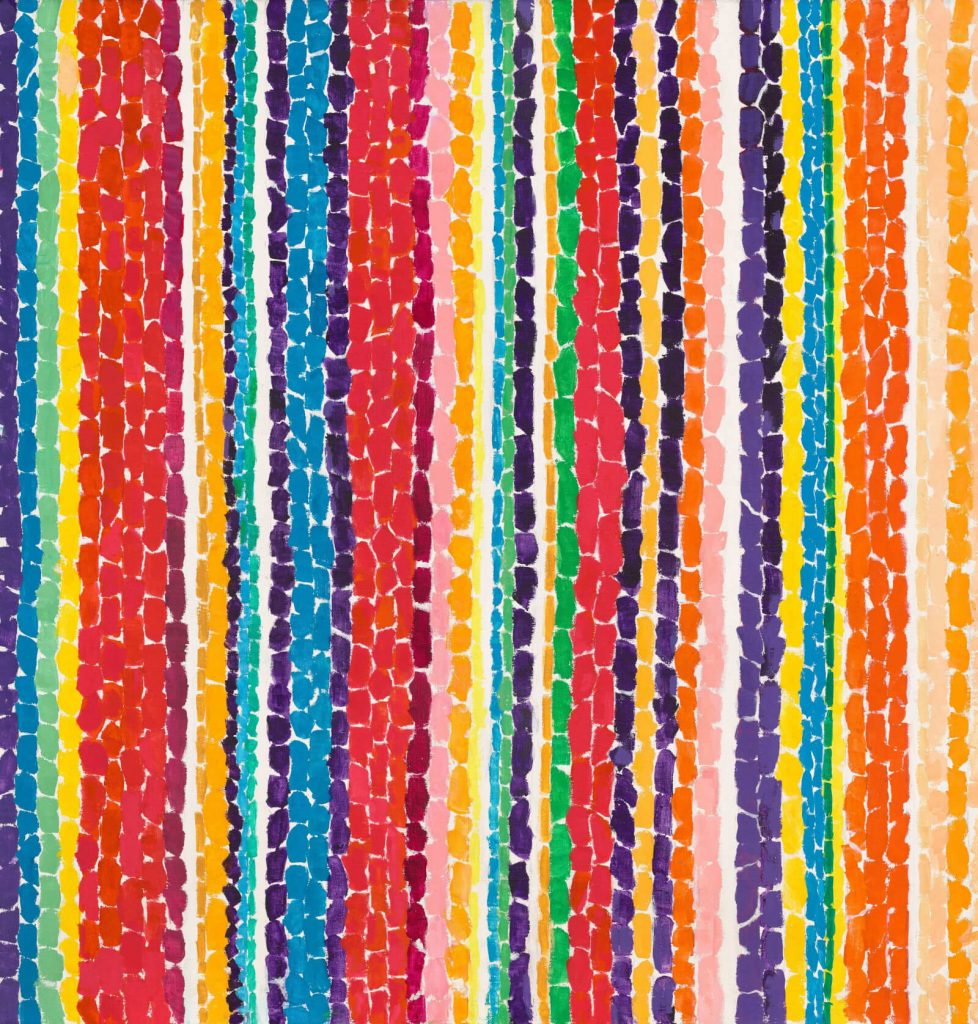
Alma Thomas, Tiptoe Through the Tulips, 1969, National Gallery of Art, Washington DC, USA.
The American art world is still dominated by a white male standard. Therefore, any aspiring artist who is not a white male will have additional barriers to overcome. A Black female is the antithesis of the white male standard. She is different by her sex and by her race. However, great Black female artists do exist. Alma Thomas is one such pioneer making inroads of inclusion for Black and Brown artists.
Alma Thomas was born in 1891 in the restrictive town of Columbus, Georgia. This was the segregated South prior to the Civil Rights Act of 1964. Thomas’s family moved in 1907 to Washington DC to escape the racial violence of Columbus and to seek more economic opportunities. In 1924, Thomas was the first graduate from Howard University to earn a Bachelor of Science in Art. Later the same year she began a 35 year career as an art teacher in a local school. After retiring in 1959, Thomas began to focus full-time on painting and developed her abstract signature style as seen in her masterpiece, Tiptoe Through the Tulips.
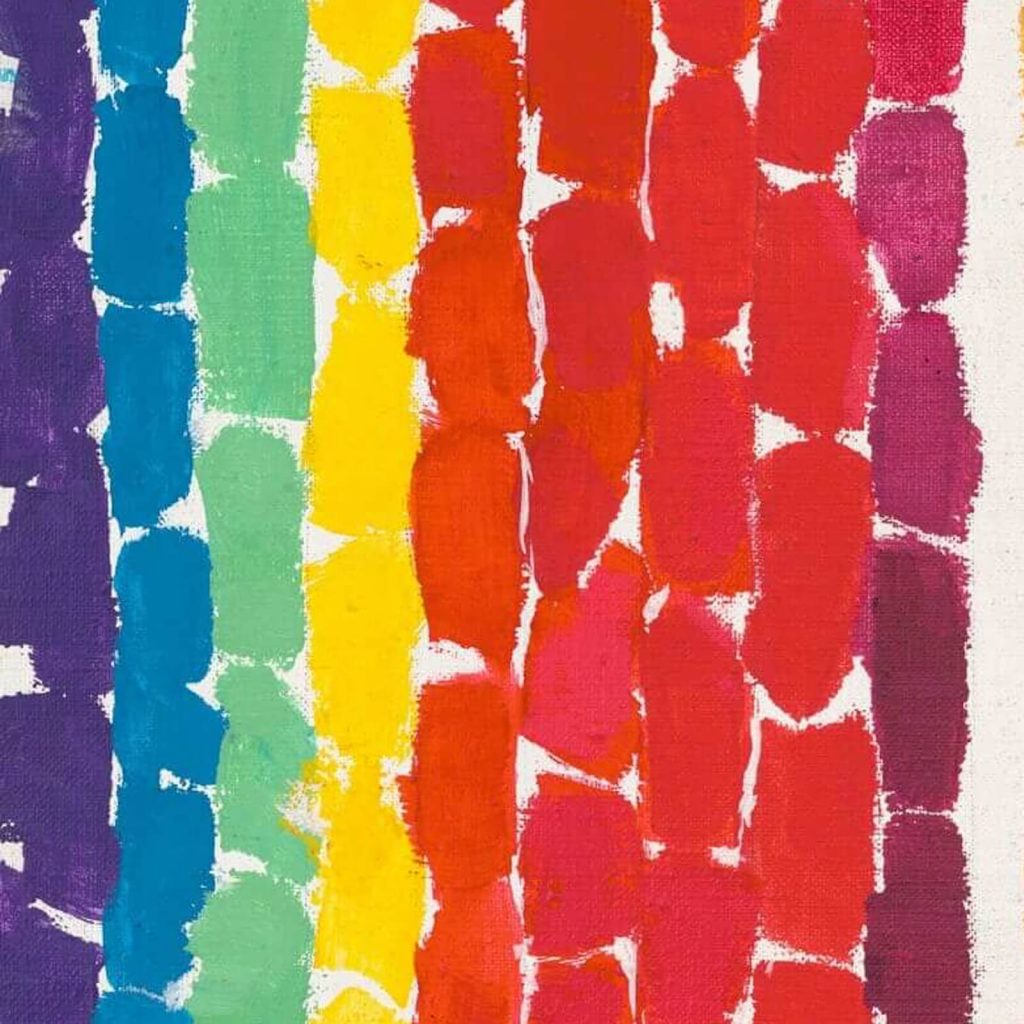
Alma Thomas, Tiptoe Through the Tulips, 1969, National Gallery of Art, Washington DC, USA. Detail.
Tiptoe Through the Tulips was created in 1969 and measures 127 cm high by 121.92 cm wide or 50 inches high by 48 inches wide. Unlike the more traditional oil on canvas, the painting is acrylic on canvas. Acrylic is a synthetic paint that is less expensive, dries faster, and is more widely available. It is the modern artist’s paint medium.
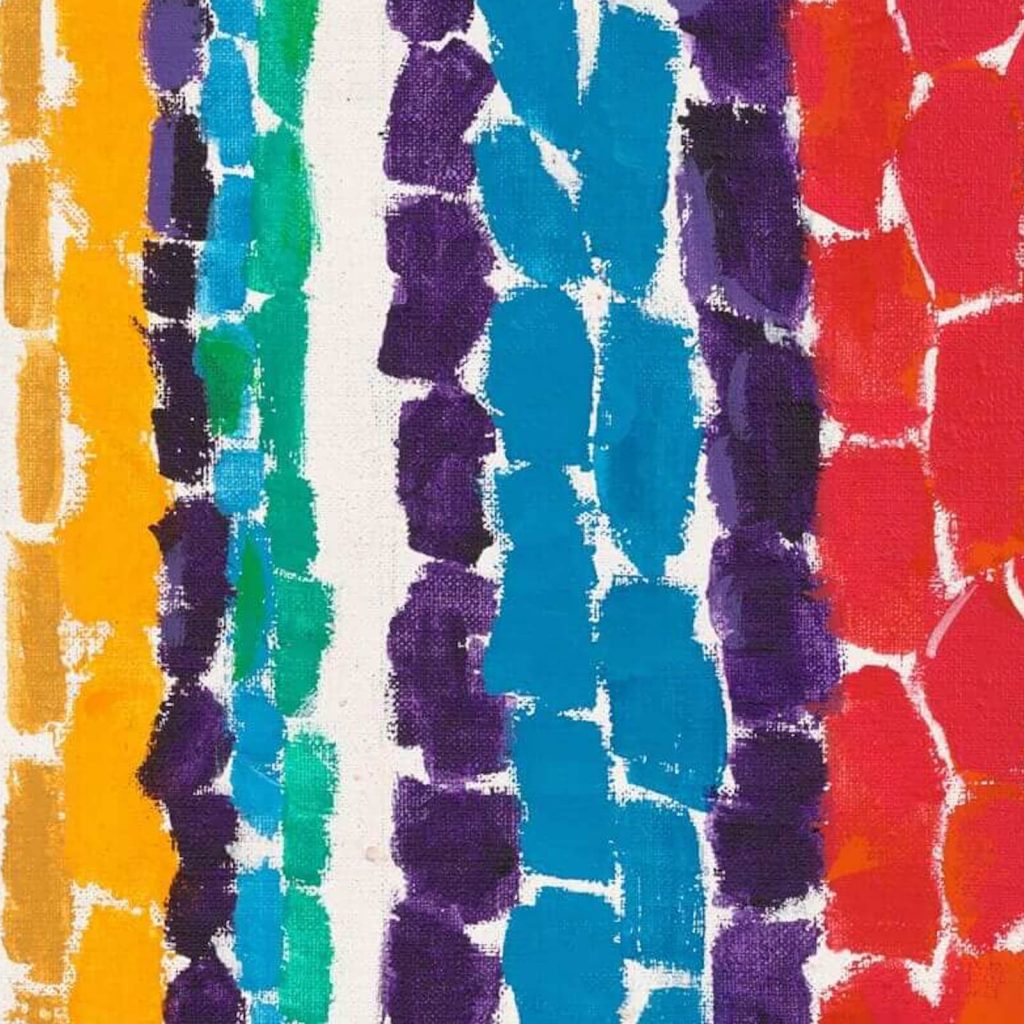
Alma Thomas, Tiptoe Through the Tulips, 1969, National Gallery of Art, Washington DC, USA. Detail.
The painting is abstract, therefore no recognizable subject may be perceived. However, Thomas was deeply inspired by nature when creating her compositions. As the painting’s name suggests, tulips were this piece’s inspiration. The tulip is a vibrant flower that can be found in almost any color. It has a long and complex history with the Netherlands famously known as the Tulipmania. However, Thomas was not referencing the flower’s Dutch past with her painting. She was referencing the beautiful rows of tulip farms famously seen on puzzle boxes and postcards. Their vibrant colors juxtaposed to each other in aligned rows add a geometric beauty.
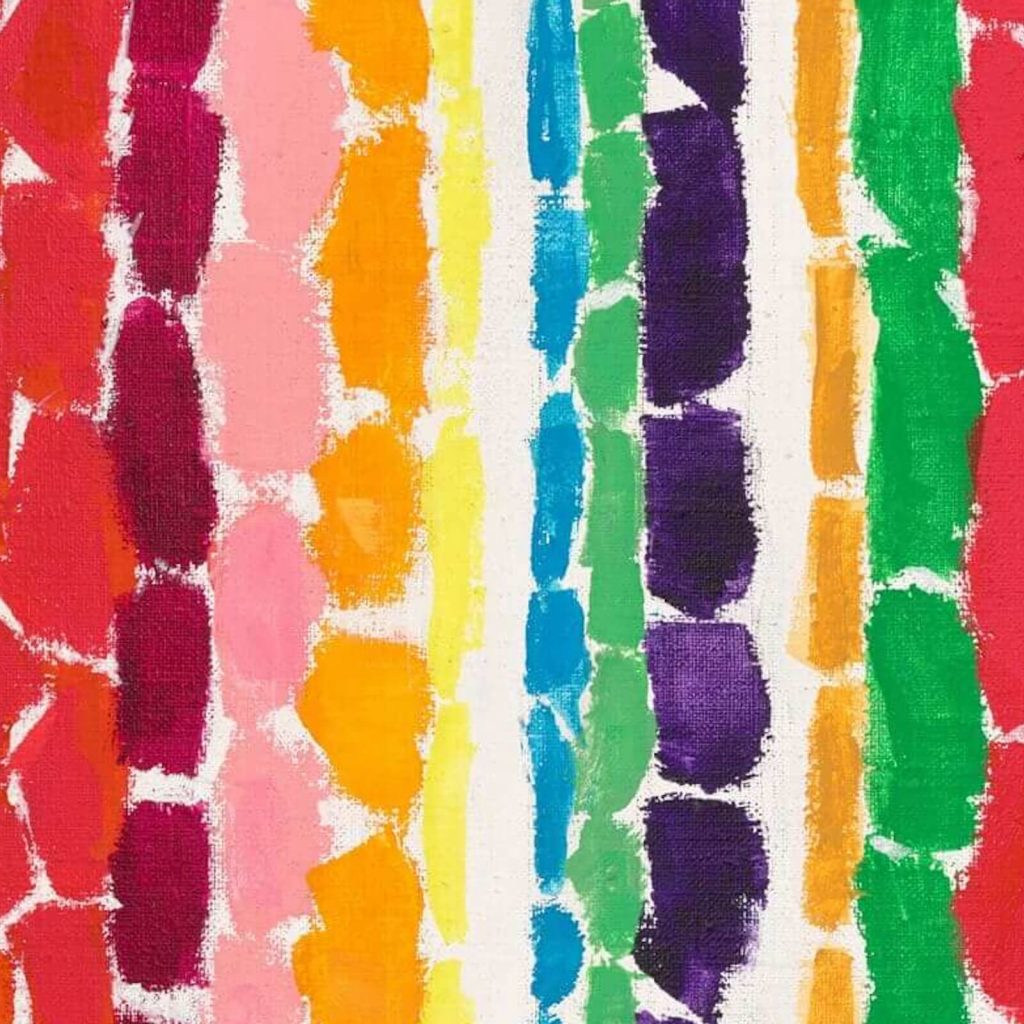
Alma Thomas, Tiptoe Through the Tulips, 1969, National Gallery of Art, Washington DC, USA. Detail.
Thomas had her debut exhibition in 1966 at Howard University at the grand age of 75. She was later the first Black female to have a solo exhibition at the Whitney Museum of American Art in 1971. Thomas died in 1978 but it was not until 2015 that one of her pieces, Resurrection, was bought and placed on public display in the White House. Thus making her the first Black female artist to be represented in the White House’s permanent collection on public display.
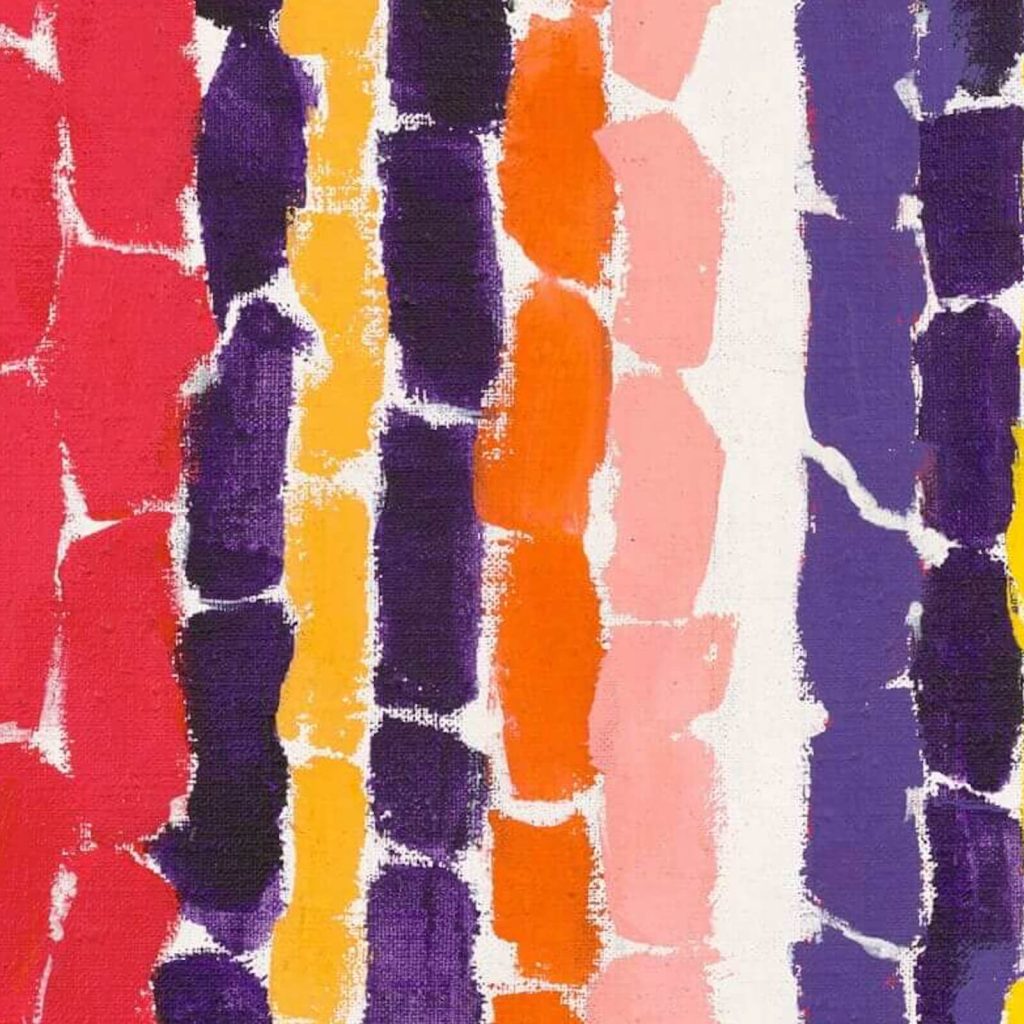
Alma Thomas, Tiptoe Through the Tulips, 1969, National Gallery of Art, Washington DC, USA. Detail.
Alma Thomas uses her natural inspirations to collect their hues, patterns, and movements for her paintings. The brushstrokes are like individual flowers swaying in the wind. There is a rhythmic play between stability defined by the rows, and instability defined by the individual element. Order and disorder rhythmically play together.
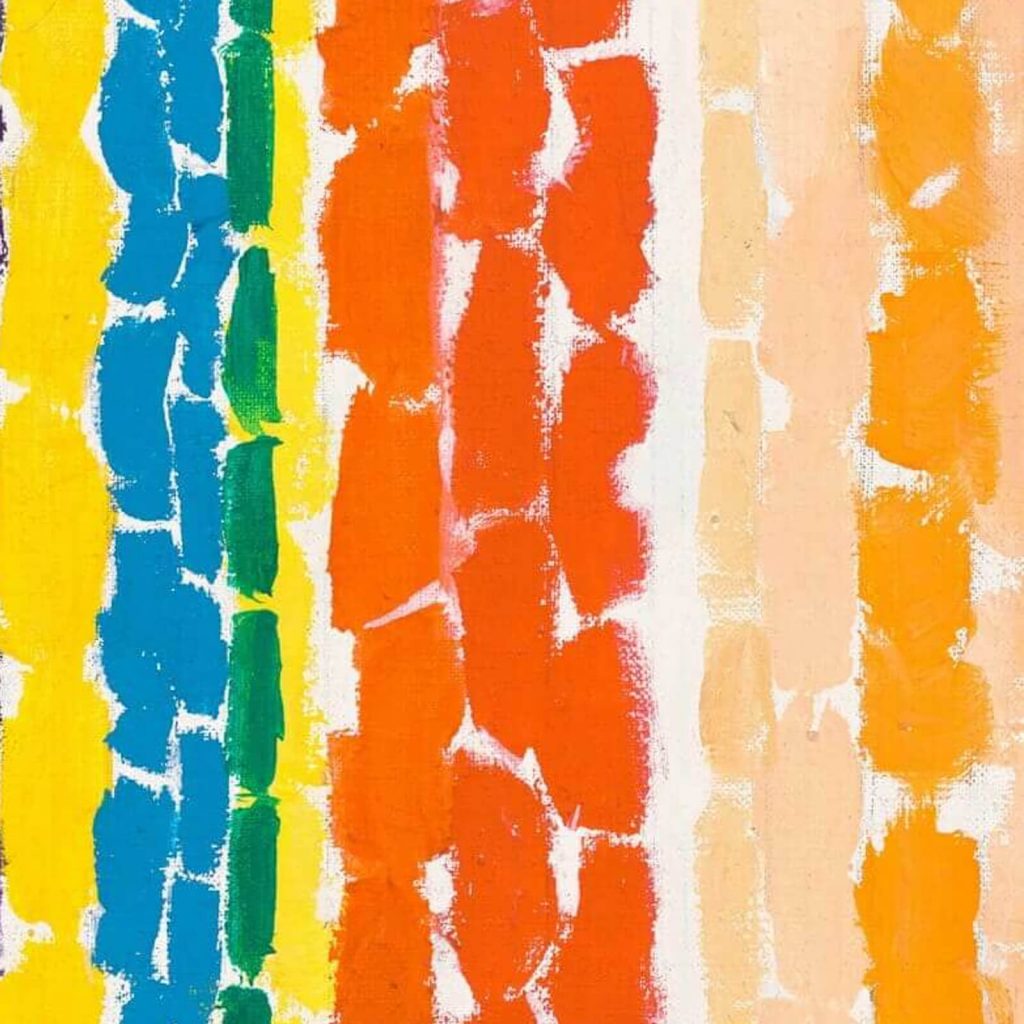
Alma Thomas, Tiptoe Through the Tulips, 1969, National Gallery of Art, Washington DC, USA. Detail.
Alma Thomas broke boundaries for women, African Americans, and older artists. Sexism, racism, and ageism still exist, but she defied discrimination by her sex, her race, and her age. She was a mature Black woman. She was a mature artist. She was a trailblazer.
“Alma Thomas.” Artists. National Museum of Women in the Arts. Accessed 26 February 2022.
“Alma Thomas.” Facts. Howard University. Accessed 26 February 2022.
“Iris, Tulips, Jonquils, and Crocuses.” Collection. National Museum of Women in the Arts. Accessed 26 February 2022.
“Orion.” Collection. National Museum of Women in the Arts. Accessed 26 February 2022.
“Tiptoe Through the Tulips.” Collection. National Gallery of Art. Accessed 26 February 2022.
DailyArt Magazine needs your support. Every contribution, however big or small, is very valuable for our future. Thanks to it, we will be able to sustain and grow the Magazine. Thank you for your help!